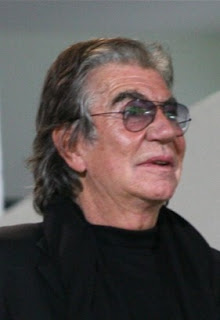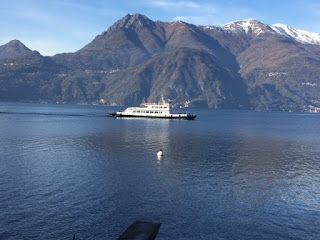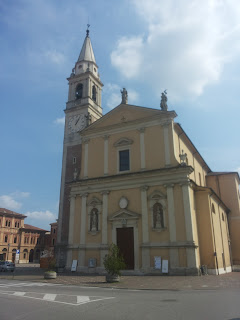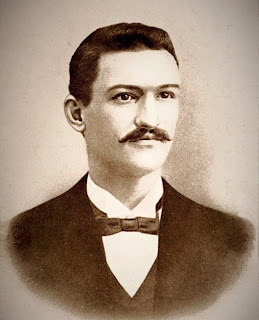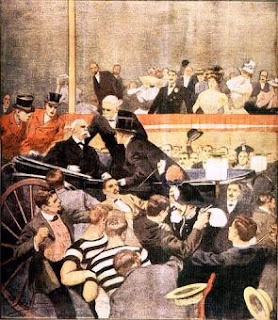Man from Mantua seen as greatest of all time
 |
| Tazio Nuvolari is seen by some as Italy's greatest racing driver |
Tazio Nuvolari, the driver many regard as the greatest in
the history not only of Italian motor racing but perhaps of motorsport in
general, was born on this day in 1892 in Castel d’Ario, a small town in Lombardy,
about 15km (9 miles) east of the historic city of Mantua.
Known for his extraordinary daring as well as for his skill
behind the wheel, Nuvolari was the dominant driver of the inter-war years,
winning no fewer than 72 major races including 24 Grands Prix. He was nicknamed Il Mantovano Volante - the Flying Mantuan.
From the start of his career in the 1920s, Nuvolari won more
than 150 races all told and would have clocked up more had the Second World War
not put motor racing in hibernation. As
it happens, Nuvolari’s last big victory came on September 3, 1939, the day the
conflict began, in the Belgrade Grand Prix.
His popularity was such that when he died in 1953 from a
stroke, aged only 60, his funeral in his adopted home city of Mantua attracted
at least 25,000 people and possibly as many as 55,000 – more than the city’s recorded
population.
His coffin was placed on a car chassis pushed by legendary
drivers Alberto Ascari, Luigi Villoresi and Juan Manuel Fangio, at the head of
a mile-long procession.
Today, his name lives on as the name of a motor racing
channel on Italian subscription television.
 |
| Tazio Nuvolari at the wheel of the Alfa Romeo car in which he won the 1935 German Grand Prix |
Nuvolari was not only a brilliant driver but one who
willingly risked his life on the track in order to satisfy his lust for
victory.
The performances that have gone down in Italian motor racing
folklore include his incredible performance against his rival Achille Varzi in
the Mille Miglia endurance event of 1930.
A significant distance behind Varzi as the race entered its
night-time phase between Perugia and Bologna, Nuvolari took the strategic
decision to switch off his headlights despite reaching speeds of more than
150kph (93mph).
Unable to see Nuvolari in his mirrors, Varzi was fooled into
thinking he had the race sewn up and eased back on the throttle only for
Nuvolari to appear alongside him with three kilometres remaining, at which
point he switched his lights on, gave Varzi a cheery wave and accelerated
ahead.
More than once, after serious accidents, he defied doctors’
orders to get behind the wheel again while still heavily bandaged, returning to
action within days when he was supposed to rest for at least a month.
 |
| How the start of a Grand Prix looked in 1935 |
His greatest performance, after which he was hailed as a
national hero, came in the 1935 German Grand Prix at the Nurburgring, which had
been set up by the Nazi propaganda machine as an opportunity to demonstrate the
might of both the German drivers and their Mercedes and Auto Union cars.
Nuvolari had tried to join the Auto Union team only to be
rebuffed and was obliged to tackle the race in an outdated and underpowered
Alfa Romeo for Enzo Ferrari’s team, an arrangement brokered by none other than
Italy’s Fascist leader Benito Mussolini.
It looked a hopeless cause.
Nuvolari had a poor start and lost more time through a refuelling delay,
yet managed somehow to battle through the field to be second by the start of
the final lap, on which he caught and passed the German Manfred von Brauchitsch
to claim what some still believe to be the greatest motor racing triumph of all
time.
The eight cars immediately in Nuvolari’s wake were all
German. As the Nazi hierarchy fumed,
Mussolini seized the chance to score a propaganda success of his own. As it happened, Nuvolari eventually got his
wish to drive for Auto Union and his last three big wins – in the Italian and
British Grands Prix of 1938 and the Belgrade event in 1939 – were under their
flag.
 |
| A garlanded Nuvolari after winning the French Grand Prix in 1932 |
Nuvolari’s daring was evident from a young age. As a boy, he designed a parachute made from
various pieces of material he had gathered up around the family home and
decided to test it by jumping off the roof of the house. He suffered serious injuries but survived to
tell the tale.
In the First World War, despite his tender years, he persuaded
the Italian army to take him on as an ambulance driver only to be deemed too
dangerous behind the wheel to be entrusted with wounded personnel.
After the Second World War, Nuvolari did return to racing
but his health began to decline in his 50s. He began to develop breathing
problems attributed to years of breathing in dangerous fumes and suffered the
first of his two strokes in 1952.
Dubbed "the greatest driver of the past, present and
future" by Ferdinand Porsche, founder of the company which shares his name,
in addition to his Grands Prix successes, Nuvolari also won five Coppa Cianos,
two Mille Miglias, two Targa Florios, two RAC Tourist Trophies, a Le Mans
24-hour race, and the European Grand Prix Championship.
The son of a farmer, Arturo Nuvolari, Tazio had grown up with
speed. His father and brother, Giuseppe,
both enjoyed success on two wheels. Indeed, Giuseppe was a multiple winner of
the Italian national motorcycling championship.
Nuvolari was married to Carolina Perina, with whom he had
two sons, Giorgio and Alberto, both of whom sadly died before they had reached
the age of 20.
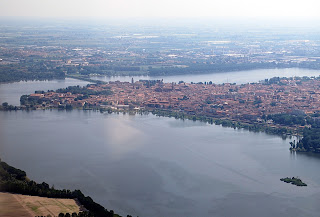 |
| Mantua is surrounded by water on three sides |
Travel tip:
Mantua has scarcely altered in size since the 12th
century thanks to the decision taken to surround it on three sides by
artificial lakes as a defence system. The lakes are fed by the Mincio river,
which descends from Lake Garda, and it is largely as a result of the
restrictions on expansion imposed by their presence that the city’s population
has remained unchanged at around 48,000 for several centuries. The city is a UNESCO World Heritage Site and
is the 2017 European Capital of Gastronomy, famous for its pumpkin ravioli (Tortelli
di zucca alla Mantovana), its pike in tangy parsley and caper sauce (Luccio in
salsa) and its pasta with sardines (Bigoli con le sardelle alla Mantovana).
 |
| The monument to Tazio Nuvolari in Castel d'Ario |
Travel tip:
The life of Tazio Nuvolari is commemorated in several ways
around Mantua and Castel d’Ario. He is
buried in the family tomb in the Cimitero Degli Angeli, on the road from Mantua
to Cremona, and his home on Via Giulia Romano how houses a museum dedicated to
his achievements. In Castel d'Ario there
is a bronze statue of Nuvolari reclining against the bonnet of a Bugatti racing
car in an open space behind the town hall as well as a square named after him.
